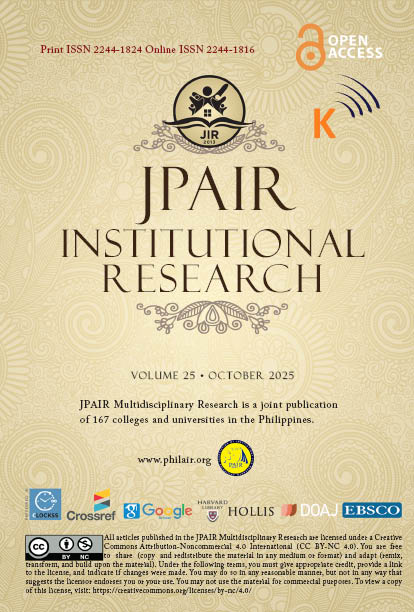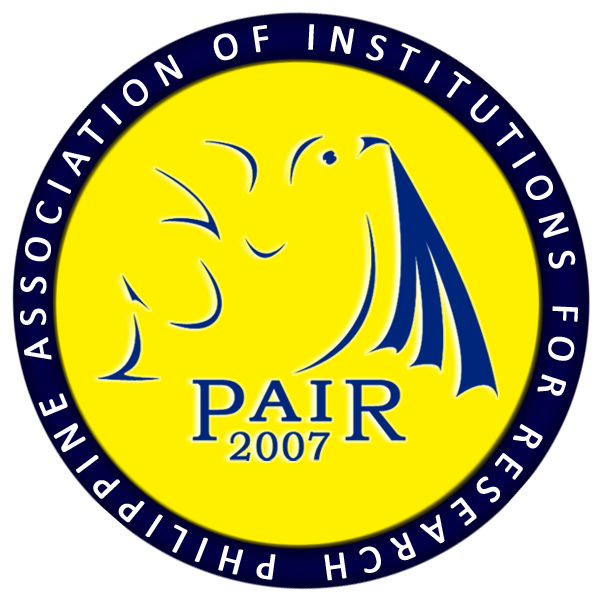Animated Pedagogical Resources in Pharmacy: Effects of Prior Knowledge, Learning Outcomes and Classroom Dynamics
DOI:
https://doi.org/10.7719/irj.v25i1.965Keywords:
Education, Animation, Classroom Dynamics, Learning Outcomes, Pharmacy, Prior Knowledge, quasi-experimental research design, PhilippinesDisciplines:
Health Professions Education, Pharmacy EducationAbstract
The rapidly changing landscape of pharmacy education has led to a need for fresh and creative pedagogical strategies that bridge the gap between academic knowledge and distinct professional practice. This study explored the effects of authentic learning material (ALM) on classroom engagement, academic performance and students' prior knowledge. The instructional materials were theoretically and epistemologically positioned within the frameworks of Constructivist Learning, Situated Learning, and Bloom's Revised Taxonomy using Quasi-Experimental Design. The results indicated that pharmacy students had from very little knowledge to basic knowledge about a range of pharmacy topics. The academic performances of the students over a Prelim, a Midterm, and a Final after the use of ALMs were statistically significant (p<0.001). The classroom observations averaged a 3.02 rating in the relevant checklist category, which indicated consistent and effective delivery of the instructional material from the instructors perspective. Learners' feedback demonstrated improvements in motivation and levels of engagement, and improved levels of interpretation of complex pharmaceutical concepts. Instructors identify the pedagogical nature of the animated material, and expressed frustrations regarding access to limited internet access and having to create the content in a limited time frame. Animation-based ALMs proved to be effective tools for activating prior knowledge, enhancing competency-based learning, and promoting active classroom participation. Pharmacy colleges should consider integrating multimedia in to their curricula, educating faculty on use of digital content creation and increasing their technical infrastructure to ensure the viability of these creative teaching modalities.
References
Al-Eraky, M. M., Donkers, J., Wajid, G., & van Merriënboer, J. J. G. (2015). Faculty development for competency-based medical education: From needs assessment to impact evaluation. Medical Teacher, 37(8), 802–804. https://doi.org/10.3109/0142159X.2014.970992
Anderson, L. W., & Krathwohl, D. R. (Eds.). (2001). A taxonomy for learning, teaching, and assessing: A revision of Bloom’s taxonomy of educational objectives. Longman.
Ayres, P., & Paas, F. (2020). Cognitive load theory: New directions and challenges. Applied Cognitive Psychology, 34(3), 399–406. https://doi.org/10.1002/acp.3601
Published
Issue
Section
License
Copyright (c) 2025 Richie G. Bayuran, Jenny Marie D. Blancaflor, Eric Justin M. Blancaflor

This work is licensed under a Creative Commons Attribution-NonCommercial 4.0 International License.
Open Access. This article, published by JPAIR Multidisciplinary Research, is licensed under a Creative Commons Attribution-Noncommercial 4.0 International (CC BY-NC 4.0). You are free to share (copy and redistribute the material in any medium or format) and adapt (remix, transform, and build upon the material). Under the following terms, you must give appropriate credit, provide a link to the license, and indicate if changes were made. You may do so in any reasonable manner, but not in any way that suggests the licensor endorses you or your use. You may not use the material for commercial purposes.












